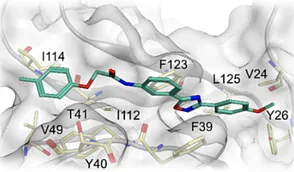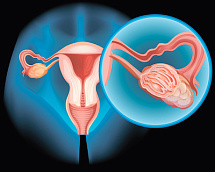Opportunistic pathogens

Opportunistic pathogens: carpe diem gone wrong
Definitions and introduction
This short piece covers some of the more widespread opportunistic pathogens (sometimes referred to as ‘OP’ for short) and the broad picture on the impact and implications they have on society.
We should, however, start with some definitions and concepts:
-
Opportunistic Pathogens – microorganisms that normally (in a healthy human) do not pose a threat, but in someone with a disrupted immune system (be it from disease or some form of immunodeficiency). As Faria et al. bluntly put it, they require a ‘defective’ host to become virulent
-
Antibiotic Resistance (AR) – in short, the ability of pathogens to not get damaged by the drug designed to kill them. May occur due to the use of pumps getting the drug out the cell (or by making it harder to get it inside in the first place), an enzyme inactivating the drug or changes to the drug target coded in the DNA
-
Food-borne pathogens – pathogens that come through food. Many OP live in the soil or vegetable microbiomes, so one of the ways OP get introduced to a weakened ecosystem that is an ill or immunocompromised host is through food
-
Immunosuppressors – a common therapy for autoimmune diseases is just to slow down the immune system. This does not come without side effects: aside from the obvious increased susceptibility to usual pathogens, the weakened host may become susceptible to organisms that normally do not act as pathogens at all – OP
To clarify, the ‘compromised’ hosts – vulnerable groups – also include old and very young people, due their naturally relatively weak immune system. Included as well are pregnant women – due to the fetal tolerance. In some countries, like the United States of America, up to a fifth of the population falls into one of the vulnerable groups.
OP have some common characteristics:
-
(Latent) hostility towards other organisms
-
Lack of nutritional rigidity
-
Can be cultivated
-
Tendency to be found in high-carbon environments
-
Competitiveness
-
Biofilm (a three dimensional structure in which cells adher to other cells and the surface) formation capability
-
High mutation speed
-
Having AR
As it is often in biology, there is no definitive border between standard pathogens and OP. A particularly illuminating example of being close to either group is Mycobacterium tuberculosis, about which we will talk later.
With the basics done with, onto the two main groups of opportunistic pathogens:
Autoimmune-related and food-borne OP
There exist several ideas outlining the way our immune system turns against us, from antibody breakdown to the deficiencies of immune system leading to autoagression. OP, however, are more intertwined with the ensuing treatment rather than the disease itself. Certain autoimmune disorders do result in vulnerability to opportunistic pathogens by themselves, however.
Another interesting complication of the relationship between autoimmune disorders and infections is that said infections, while able to cause autoimmune disorder, also might protect from them or even stop one in the tracks, depending on the details. Due to this, we need to see in microorganisms tools, which allow us to control the immune system.
Back to our original topic. Some OPs are connected to a narrow slice of problems, like tuberculosis (figure 2). Herpes zoster is an example one might be more aware of, owing to its sheer prevalence. Cryptococcus is another OP – AIDS-related one, and it has some unusual clinical displays, making treatment harder. John Canningham virus, which is usually forced to lay low, when reactivated, results in pathogenesis capable of progressing into progressive multifocal leukoencephalopathy.

Figure 1. Enterobacteriaceae. Normally, harmless members of our intestinal biota. Some species are food-borne OP, and common ones, at that.
As stated above, OPs tend to live in soil and flora. This means that they can be transported with food: for example, Pseudomonas aeruginosa and Staphylococcus aureus take this route.
Vegetable biome, generally speaking, is capable of acting as a pool of OPs, as indicated by more frequent infections by OPs corresponding to more prevalent produce (the kind that acts as a reservoir, of course) consumption.
A global problem, not a communal one
While it is tempting to view the problems of opportunistic pathogens and antimicrobial resistance as local, therefore contained and impacting only the primary territory, such attempts are ill-fitted when it comes to actually solving the problem.
Lack of resources in less fortunate countries creates a breeding ground for OP – there is no shortage of vulnerable hosts, and these hosts do not get the treatment they need. This results in acquired treatment resistance – AR. Blaming the victims, both on the individual and communal scale, does nothing to address the problem.
This view is shared by more than bleeding hearts in academia – in its 2019 report, the CDC also urges global action. One can only hope that the Covid pandemic left a painful enough scar on the collective psyche to act with purpose and compassion in the following years.

Figure 2. Mycobacterium tuberculosis. While largely not a threat, without any ARs, in developed countries, in other places it remains a cause of death through tuberculosis. It does, howerer, evolve, as any other organism, and, then subjected to antibiotics, may evolve the ability to resist. Fortunately, there does not seem to be a rise in treatment-resistant TB in the US.
Conclusion
Opportunistic pathogens and antibiotic resistance work together and endanger the current antibiotic-reliant model. The pathogens already are on the verge of living in the post-antibiotic world, with both the normal pathogens getting harder to cure and OP coming into play. A coordinated global effort to properly monitor OP and use antibiotics only when necessary, as well as the development of new medicine, with no unnecessary tribalism, is an already available solution and will help us all in both the short and the long run.
Sources
[1] Chapter 15: Opportunistic pathogens and autoimmune diseases, 2015, Faria et al.
[2] Chapter 10: Opportunistic food-borne pathogens, 2018, Fusco et al.
[3] The perspective of Socioeconomic Inequalities and Infectious Disease in 21st Century, Massey and Mabhala
[4] 2019 Antibiotic Resistance threats report, CDC. Both figures are from here.


